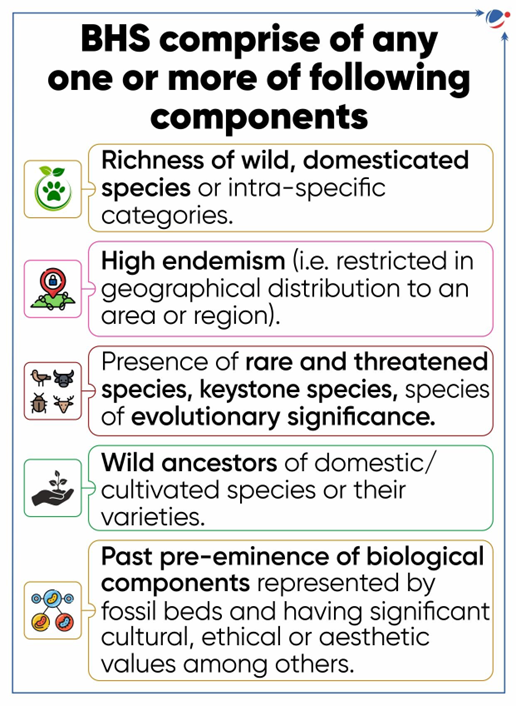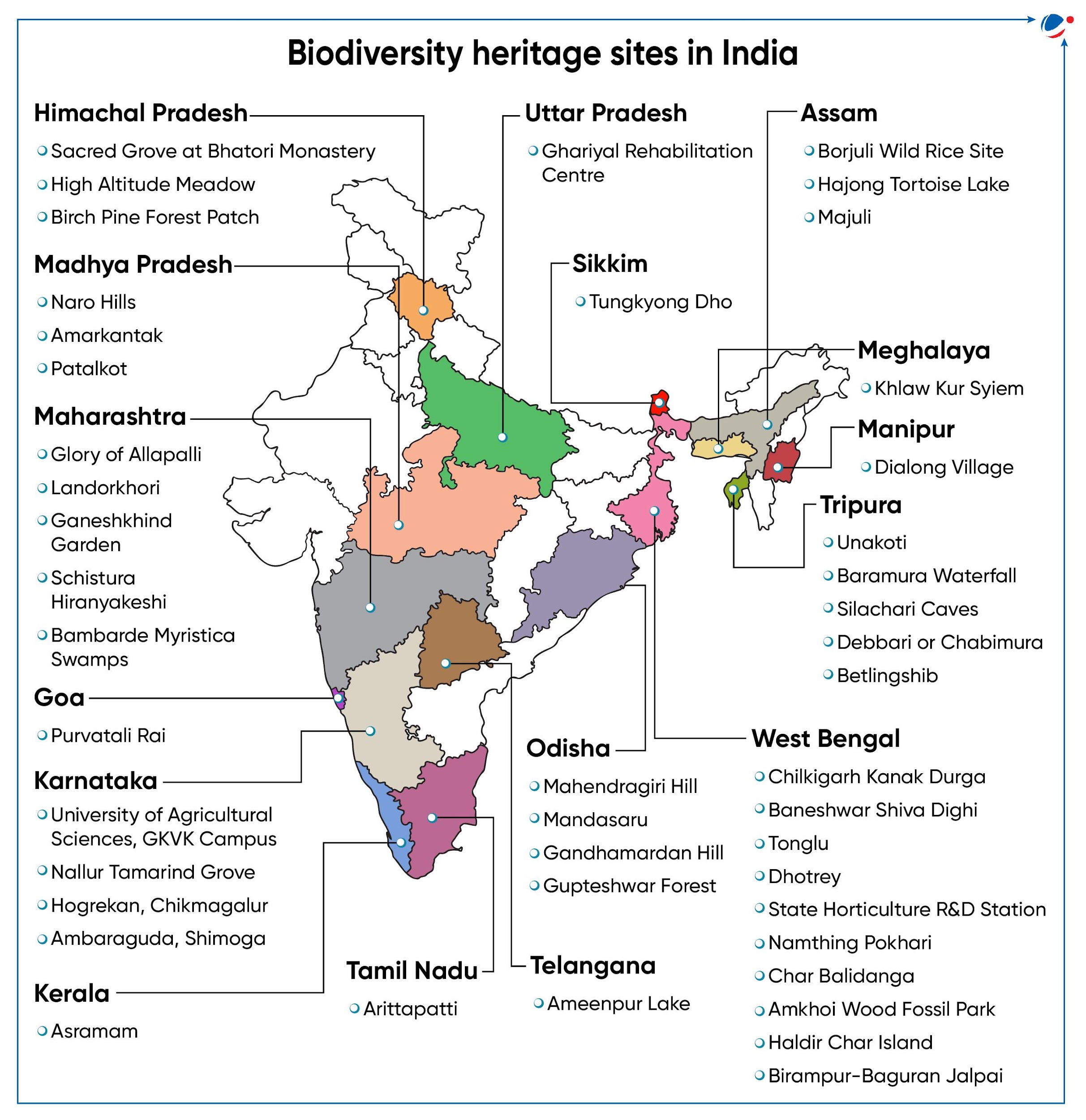Why in the news?
Recently, Gupteswar Forest in Odisha’s Koraput district has been declared as the fourth Biodiversity-Heritage Site (BHS) of the state.
About Gupteswar forest
- It is spread over 350 hectares of demarcated area and located adjacent to Gupteswar Shiva temple (a natural limestone cave shrine).
- It is situated in the southernmost region of Odisha and a part of Eastern Ghats.
- It holds immense cultural significance due to its sacred groves.
- It is bestowed with a wide range of flora and fauna.
- Key faunal species: Mugger crocodile, Kanger valley rock gecko, and avifauna like common Hill myna, White-bellied Woodpecker, and Banded Bay Cuckoo, etc.
- Key floral species: Among others, forest has threatened medicinal plants such as Indian trumpet tree, Indian snakeroot, Cumbi gum tree, Garlic pear tree, etc.
About Biodiversity-Heritage Site (BHS)
- BHS are well defined areas that are unique, ecologically fragile ecosystems - terrestrial, coastal and inland waters and, marine having rich biodiversity comprising some specific components (refer image).
- Under Section 37 of Biological Diversity Act, 2002, State Government in consultation with local bodies may notify areas of biodiversity importance as BHS.
- Also, State Government in consultation with Central Government may frame rules for management and conservation of BHS.
- National Biodiversity Authority (NBA) advices the State Government in the selection and management of heritage sites under section 37.
- NBA is an Autonomous and Statutory Body of MoEFCC.
- NBA (Headquartered in Chennai) was established in 2003 by Central Government to implement India’s Biological Diversity Act, 2002.
- As per National Biodiversity Authority (NBA), India has a total of 45 BHS as of February 2024.

Criteria for identification of BHS
|
Objectives of BHS
- Strengthen biodiversity conservation in traditionally managed areas and to stem rapid loss of biodiversity in intensively managed areas.
- Foster harmony between nature, culture, society, and technology, promoting conservation and livelihood security while enhancing connections between wild and domestic biodiversity.
- Instill and nurture conservation ethics in all sections of society and thereby put an end to over-exploitation of natural resources and avoid environmental degradation.
- Enhance the quality of life of the local communities.
Management of BHS
- Biodiversity Management Committee (BMC) or other appropriate institution as determined by relevant local body in absence of BMCs may manage each BHS.
- Wherever BHS extends to more than one local bodies, management of BHS shall be the responsibility of BHS Management Committee constituted by BMC or other relevant local institutions linked to local bodies in case BMC does not exist, and approved by State Biodiversity Boards (SBB).
- Committee responsible for management of BHS may include representatives of all sections of local communities, and in particular those most dependent on natural resources and who have been traditionally conserving the area.
- Responsibility of BMC/BHS Management Committee to prepare and implement a management plan for BHS which should cover a period of five to ten years.
- SBBs will facilitate the implementation of the final management including the regeneration or revival of degraded or lost ecosystems and taxa, reintroduction of threatened/locally extinct wildlife where feasible etc.
- Generally, no restriction is to be placed on the community on prevailing practices and the utilization of resources from the proposed BHS.
About Biodiversity Management Committee (BMC)
|




